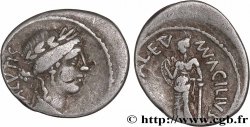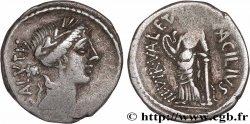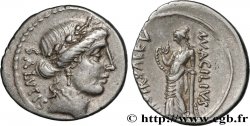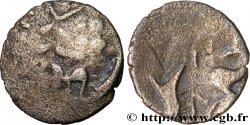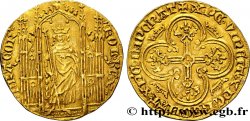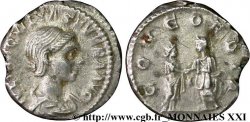Zurück 1/1
brm_292495 - ACILIA Denier
Nicht verfügbar.
Artikel auf unserem Online-Shop verkauft (2018)
Preis : 250.00 €
Artikel auf unserem Online-Shop verkauft (2018)
Preis : 250.00 €
Type : Denier
Datum: 49 AC.
Name der Münzstätte / Stadt : Grèce ou Illyrie
Metall : Silber
Der Feingehalt beträgt : 950 ‰
Durchmesser : 19,5 mm
Stempelstellung : 12 h.
Gewicht : 4,01 g.
Seltenheitsgrad : R1
Slab

NGC :
Kommentare zum Erhaltungszustand:
Exemplaire sur un flan large et ovale, parfaitement centré des deux côtés avec les grènetis complets. Très beau portrait de la Santé, bien venu à la frappe. Joli revers de style fin. Belle patine de collection ancienne gris foncé avec des reflets dorés
N° im Nachschlagewerk :
Vorderseite
Titulatur der Vorderseite SALVTIS.
Beschreibung Vorderseite Tête de Salus (la Santé) laurée à droite.
Übersetzung der Vorderseite “Salutis”, (de la Santé).
Rückseite
Titulatur der Rückseite (MN) ACILIVS/ III VIR VALE(TV).
Beschreibung Rückseite Valetudo (la Santé) debout à gauche, appuyée sur une colonne de la main gauche et tenant un serpent de la main droite.
Übersetzung der Rückseite “Manius Acilius Triumviri Valetudinis”, (Manius Acilius triumvir monétaire Valetudo).
Kommentare
Pour ce type, M. Crawford a relevé une estimation de 651 coins de droit et de 723 coins de revers ce qui pourrait correspondre à une fabrication totale comprise entre un million et demi et trois millions de deniers. C’est l’un des types monétaires qui permit de financer le parti sénatorial au début de l’année 49 avant J.-C. quand ce dernier rejoignit Pompée qui avait quitté Rome. Les auteurs du Catàlogo ont différencié trois variétés dont la nôtre qui semble la plus rare avec le mot SALVTIS qui remonte vers le haut derrière la tête. Une petite contremarque de banquier sur la joue (V) en creux.
For this type, Mr. Crawford noted an estimate of 651 obverse dies and 723 reverse dies, which could correspond to a total production of between one and a half and three million denarii. This is one of the monetary types that allowed the financing of the senatorial party at the beginning of the year 49 BC when the latter joined Pompey who had left Rome. The authors of the Catàlogo differentiated three varieties, including ours, which seems the rarest, with the word SALVTIS rising upwards behind the head. A small banker's countermark on the cheek (V) in hollow
For this type, Mr. Crawford noted an estimate of 651 obverse dies and 723 reverse dies, which could correspond to a total production of between one and a half and three million denarii. This is one of the monetary types that allowed the financing of the senatorial party at the beginning of the year 49 BC when the latter joined Pompey who had left Rome. The authors of the Catàlogo differentiated three varieties, including ours, which seems the rarest, with the word SALVTIS rising upwards behind the head. A small banker's countermark on the cheek (V) in hollow







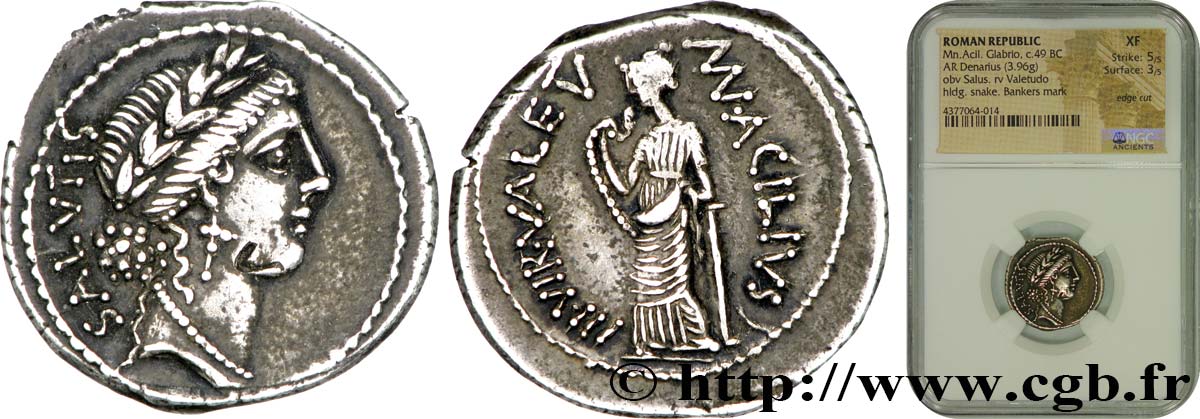
 Berichten über einen Fehler
Berichten über einen Fehler Die Seite drucken
Die Seite drucken Teilen meiner Auswahl
Teilen meiner Auswahl Stellen Sie eine Frage
Stellen Sie eine Frage Einlieferung/Verkauf
Einlieferung/Verkauf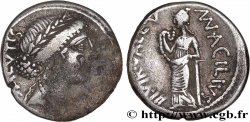
 Details
Details
